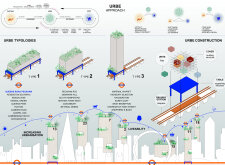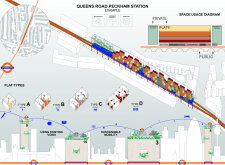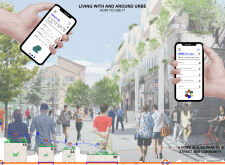5 key facts about this project
The architectural approach focuses on integrating living spaces with the urban landscape, ensuring that developments are not only functional but also visually cohesive within their context. By selecting multiple sites along the Overground network in London, the project makes efficient use of underutilized airspace, transforming it into cohesive living environments that cater to modern living arrangements.
Innovative Use of Airspace
A standout feature of the URBE project is its utilization of airspace over railway lines. This approach allows for the development of vertical living spaces while minimizing the impact on ground-level infrastructure. The design leverages three primary housing typologies to accommodate diverse residential needs. Each typology varies in scale and layout, ensuring adaptability and flexibility across the development sites. The compact urban flats, multi-layered units, and mixed-use developments foster a balance between private residences and communal amenities, promoting interaction among residents.
Community-Centric Design
URBE emphasizes community engagement through its architectural layout. Shared amenities such as communal gardens, co-working spaces, and recreational facilities encourage social interaction. The design integrates green roofs and natural elements to promote environmental quality and enhance the living experience. Furthermore, the architecture takes into consideration sustainable mobility options, with dedicated pedestrian pathways and bicycle lanes that facilitate eco-friendly transportation methods. The incorporation of technology within the community adds an interactive dimension, allowing residents to connect with local events and services seamlessly.
The URBE project redefines urban housing standards by presenting a practical solution to the challenges of density and community cohesion. The design is a testament to modern architectural principles that value both functionality and aesthetic coherence. For more detailed insights into the architectural plans, architectural sections, and overall architectural designs, readers are encouraged to explore the project presentation further. Discover the unique architectural ideas that contribute to URBE's innovative approach to urban living.


























